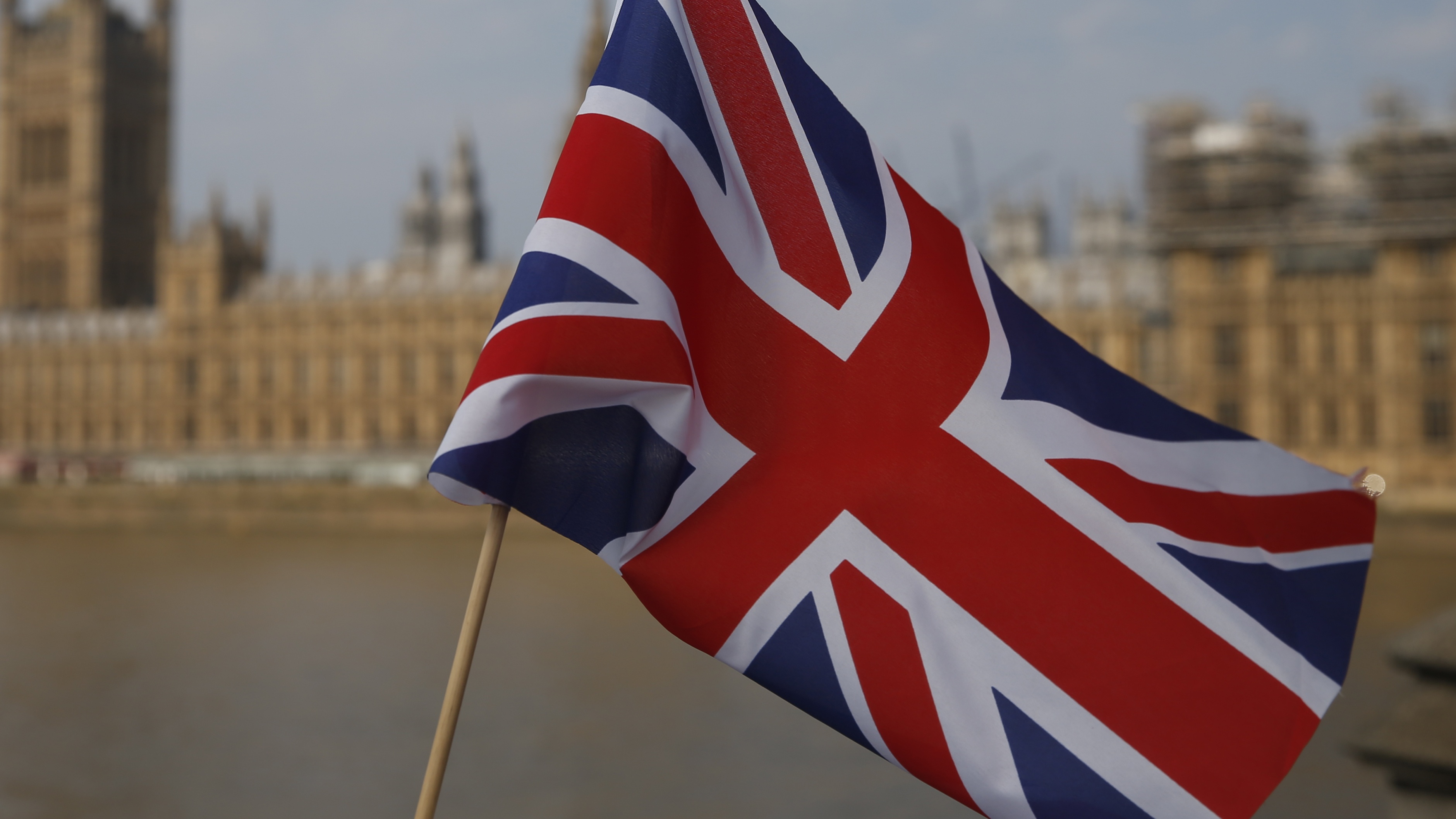The history of the Union Jack
New official guidance says flag should be flown from all government buildings in England, Wales and Scotland

Government ministers looking to bolster the embattled state of the union are pinning their hopes on a potent symbol.
In “another apparent escalation of the ongoing flag-based culture war,” newly issued guidance from the Department of Culture advises that the Union Jack should be flown every day from all government buildings in England, Wales and Scotland, The Guardian reports.
Culture Secretary Oliver Dowden has called Union Jack “a proud reminder of our history and the ties that bind us” - but not everyone agrees.
The Week
Escape your echo chamber. Get the facts behind the news, plus analysis from multiple perspectives.

Sign up for The Week's Free Newsletters
From our morning news briefing to a weekly Good News Newsletter, get the best of The Week delivered directly to your inbox.
From our morning news briefing to a weekly Good News Newsletter, get the best of The Week delivered directly to your inbox.
Creation of the Union Jack
The Union Jack is “so called because it combines the crosses of the three countries united under one sovereign - the kingdoms of England and Wales, of Scotland and of Ireland”, explains the Royal Family’s official website.
The flag dates back to 1606, three years after James VI of Scotland ascended to the throne of England to becomes James I.
England and Scotland remained separate states on his accession, but a new flag was created as a “symbol of harmony” following “alterations between English and Scottish ships”, writes historian Dominic Sandbrook in an article for BBC History Magazine.
A free daily email with the biggest news stories of the day – and the best features from TheWeek.com
The flag originally comprised the “red cross of England superimposed on the white cross of Scotland, with the blue field of the latter”, says Encyclopaedia Britannica.
In January 1801, the effective date of the legislative union of Great Britain and Ireland, the Cross of St Patrick was incorporated into the design - a red diagonal cross.
The symbol of the fourth nation in the union - the Welsh dragon - doesn’t appear on the flag, however. According to the Royal Family’s website, “this is because when the Union flag was created in 1606, the Principality of Wales by that time was already united with England and was no longer a separate principality”.
The Union Jack is now raised on about 20 designated days a year, “covering national saints’ days across the UK nations and a selection of royal occasions, primarily the birthdays of senior family members”, says The Guardian.
Union Jack or Union Flag?
Many people believe that the national flag should be called the “Jack” only when flown from a British warship, but the Flag Institute says that “either name is valid”.
“In 1902, an Admiralty Circular announced that either name could be used officially,” the educational charity explains. “And in 1908, the UK Parliament approved this verdict, stating that ‘the Union Jack should be regarded as the national flag’.”
The origins of the term “Union Jack” is unclear, but Buckingham Palace historians believe it may date from the time of Queen Anne’s reign (1702-14).
“It may come from the ‘jack-et’ of the English or Scottish soldiers, or from the name of James I who originated the first union in 1603,” says the Royal Family’s website.
Raising ministers’ flagging hopes
Members of the current government have shown an “increasing fondness” for ensuring that a Union Jack “is part of their home or office backdrop for TV interviews”, says The Guardian. But the trend triggered a row recently when BBC Breakfast presenters Charlie Stayt and Naga Munchetty “were chastised for gently teased” Communities Secretary Robert Jenrick over his display of the flag.
The decision to fly the Union Jack continuously from government buildings appears to be part of “ongoing government efforts to associate itself with a more overt union-based nationalism”, the paper continues. Councils will also be “urged to do the same from their premises”, and the only exceptions to the rule will be “times when a single flagpole is otherwise occupied, whether by another UK flag or flags to mark particular events”.
The new guidance has met with a mixed response from commentators.
The flag “has always been part of the British national consciousness”, writes Sean O’Grady in The Independent, and is “sometimes associated with freedom and democracy, and the defeat of fascism”. However, “at other times, the flag accompanied imperial conquest and oppression”, he notes.
The Telegraph’s Patrick O’Flynn says that distaste for the Union Jack is an “explicitly political rejection of Britain’s history and heritage”, and exemplifies a “belief that this country should be ashamed of both”. But “these symbols of belonging carry a powerful message about mutual obligation and the ties that bind us together in one society”, he argues.
The Times also views the Union Jack as a useful tool for promoting national harmony. “Given that the words English, Scottish, Welsh and Irish carry, for good or ill, a connotation of ethnicity which perhaps excludes non-natives, allegiance to Britain serves as a useful unifying alternative,” says the paper.
Maybe in theory, says The Guardian’s John Harris, but the flag’s meaning has become “tattered and torn”. Ministers may try to convince us otherwise with their displays of “national chest-beating”, but “mass backing in Scotland for independence”, and increasing support in Wales to go it alone, “clearly speaks for itself”, he continues.
And “in both countries, Union Jacks and invocations of the bulldog spirit will surely do the fragile cause of unionism much more harm than good”.
-
 ‘Care fractures after birth’
‘Care fractures after birth’instant opinion Opinion, comment and editorials of the day
-
 Shots fired in the US-EU war over digital censorship
Shots fired in the US-EU war over digital censorshipIN THE SPOTLIGHT The Trump administration risks opening a dangerous new front in the battle of real-world consequences for online action
-
 What will the US economy look like in 2026?
What will the US economy look like in 2026?Today’s Big Question Wall Street is bullish, but uncertain
-
 The tricky science behind eliminating peanut allergies
The tricky science behind eliminating peanut allergiesfeature Scientists are racing to find a cure for allergies while profit-conscious companies wait eagerly in the wings
-
 The science behind lab-grown blood
The science behind lab-grown bloodfeature Development of ‘absolute game changer’ could help those with sickle cell and other conditions
-
 What we know so far about North Korea’s latest long-range cruise missile
What we know so far about North Korea’s latest long-range cruise missilefeature US says the weapon may have nuclear capabilities and poses ‘threats’ to neighbouring nations
-
 What causes Havana Syndrome?
What causes Havana Syndrome?feature Officials investigate outbreak of cases at US embassy in Colombia
-
 A history of the peace walls in Belfast
A history of the peace walls in Belfastfeature More than 60 remain throughout Northern Ireland
-
 What is Lassa fever and are we in a ‘new pandemic era’?
What is Lassa fever and are we in a ‘new pandemic era’?feature British patient dies of virus that causes bleeding eyes and facial swelling